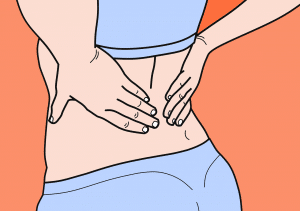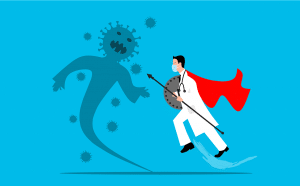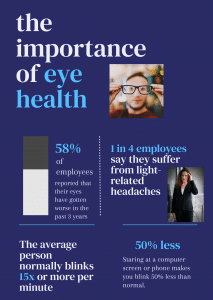A concussion can happen to anyone at any time. Your child could get injured playing sports, or you could have a car accident during which you hit your head. A concussion is a traumatic brain injury caused by a bump or blow to the head strong enough to cause your brain to move rapidly back and forth in your skull. Concussions can have a variety of symptoms, but the effects can be serious. If you suspect a concussion, you should go to the doctor to rule out any damage to your brain. March is Brain Injury Awareness Month, so to help raise awareness of this common type of brain injury, we will discuss the different types of concussions, symptoms to look out for, and treatment.

What Is A Concussion?
The rapid back and forth movement that causes a concussion has multiple effects on your brain. It causes a chemical change in the brain, which can damage brain cells, as well as bruising and damage to the nerves and blood vessels. All of this can alter your brain’s functions, and cause a variety of symptoms, the severity of which is graded on a scale of 0 to 4. Most people do recover from concussions quickly, but for some, symptoms can last days, weeks, or even months.
The Different Types Of Concussions
There are 5 different types of concussions:
- Vestibular- Symptoms include dizziness, fogginess, lightheadedness , nausea, vertigo, and disequilibrium.
- Ocular-motor- Symptoms include headache, eye strain, sensitivity to light, blurred or double vision, trouble focusing, eye pain, and difficulty reading and driving.
- Headache/Migraine- Symptoms include nausea, vomiting, sensitivity to light, sound or smell.
- Cognitive- Symptoms include attention issues, impaired reaction time, problems with memory, and problems with new learning and the organization of thoughts and behavior.
- Anxiety/Mood- Symptoms include nervousness, emotionality, depressed mood, anger, irritability, fatigue, loss of energy, and feeling overwhelmed or hopeless.
Signs Of A Concussion
Symptoms can appear right away, while others might take days, or even months, after the injury to appear. The signs to watch for include:
-
- Drowsiness or inability to wake up
- One pupil larger than the other
- Slurred speech or decreased coordination
- Persistent and intense headache
- Repeated vomiting or nausea
- Increasing confusion
- Loss of consciousness

Dangerous signs that require a trip to the emergency room include:
- Numbness or weakness in limbs
- Extreme drowsiness or the inability to be fully awakened
- Inability to recognize familiar people or places
- Having one pupil that is larger than the other
- Fever of 100.5°F or higher
- Seizures or convulsions
- Slurred speech
- Abnormal behavior, such as extreme confusion or irritability
According to the CDC, young children experience the same symptoms as older children, which can include:
- Crying more than usual
- Headache that will not go away
- Changes in the way they play, perform or act at school
- Changes in nursing, eating, or sleeping patterns
- Becoming easily upset or increased temper tantrums
- Lack of interest in usual activities or favorite toys
- Loss of new skills, such as toilet training
- Loss of balance, unsteady walking
- Poor attention
Having a concussion increases risk of having another one that will take longer to recover from.
Treatment For Concussions
If you or a family member has had an injury and is showing signs of a concussion, see your doctor immediately so you can be evaluated. Your doctor will do a scan of your brain, and administer tests that will assess learning and memory skills, your ability to pay attention or concentrate, and how quickly you can think and solve problems. About 80% of people who suffer a concussion will recover in about 3 weeks, but it can take several months or more for the other 20%.

Rest is extremely important to treat concussions, because it helps the brain heal. It will take some time, and during that time you need to avoid any activities that can lead to another possible injury. You should:
- Only take drugs approved by your doctor.
- Not drink alcohol until you are well.
- Avoid computer use.
- Get a lot of sleep.
- Avoid working out or lifting anything heavy that will throw you off balance.
Treatment for the different types of concussions include:
- Vestibular- Balance and vestibular-ocular training with a physical therapist.
- Ocular-Motor- Dynamic vision training with an optometrist.
- Headache/Migraine- Headache management.
- Cognitive- Neuropsychological assessment and treatments.
- Anxiety/Mood- Counseling, including cognitive-behavioral therapies.
Accidents happen, and so can concussions. The best way to prevent a concussion is to be as safe as possible. Wear protective gear during sports, buckle seat belts, and exercise regularly to improve balance. Knowing the signs to look for is important, so you can get treated appropriately and quickly. The quicker you get treated, the better your chance of avoiding serious complications from a concussion. You should also have a good health insurance plan in case you do experience a medical emergency. If you or your child do end up with a concussion, the last thing you need to worry about is a large bill after your hospital visit.
If you are in need of a health insurance plan, or if your current plan is not right for you, speak to an EZ agent. EZ.Insure works with the best insurance companies in the country, so we can instantly compare plans in minutes. We provide you with an agent who will assess your financial and medical needs, and who will find an affordable plan that provides the coverage you need and saves you money. To compare plans for free, simply enter your zip code in the bar above, or to speak directly with an agent, call 888-350-1890.














